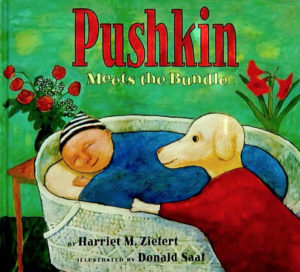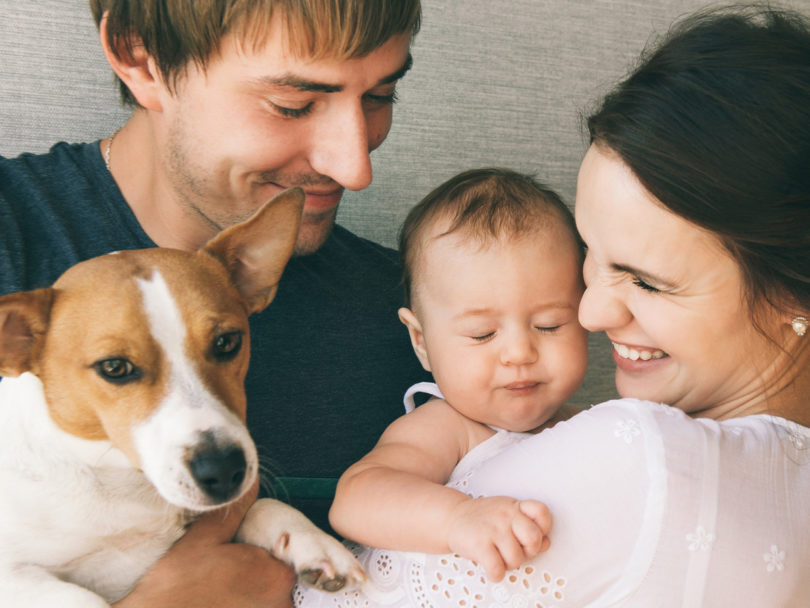Anya knew the birth of her first child would be an adjustment for her four dogs and cat. “We planned very carefully for all of our dogs before we got them,” she says. “We wanted each to be well trained before getting another.” A natural planner, she knew a baby would be different and wanted her fur-kids to be prepared.
Previously, Anya was a rescue volunteer for 13 years. “The number one reason people surrendered dogs was they were expecting a baby, or had a baby and the dog was acting out,” she says. Kicking out her pets was not a consideration. She worked carefully with her animals before the baby’s arrival to ensure they were relaxed and not fearful. She found the following techniques worked best:
- START TRAINING. “Once you’ve got that, the rest is much easier,” says Anya. And it is never too late to begin training!
- GET A CD OF BABY SOUNDS. The CD starts out softly, with happy sounds like the baby cooing, then progresses to crying and, finally, screaming. At the end all the sounds are put together. Anya played the CD while preparing food for her pets. “The dogs got accustomed to hearing the sounds while eating, and for them it was like, ‘I’m getting fed, so who cares!’” she says.
- CHANGE UP THE ROUTINE. A dog’s routine will be changed when the baby arrives anyway, so to avoid sudden, stressful changes that may take the dog by surprise, start early. Walk and play at different times a few days a week. Get your dog used to shorter walks. Occasionally change feeding times. The animal will then be used to change by the time baby comes home.
- LET THE ANIMALS IN THE NURSERY when setting up. Let them sniff around furniture, toys and clothes. Keep their actions in the nursery controlled, so they learn to respect the baby’s space and things. Later on, it will be necessary to teach a child to respect the dog’s space and things in return.
- CLAIM SPACE. If you have been stepping over your dog to get around, stop. The dog needs to learn to move. “You don’t want the baby crawling over them,” Anya Says. “If you make them move when they are in the way, they will learn to get up and move without being told. You want them to understand they have to move for humans.” Most dog bites (especially with kids) happen in the face, because that is how dogs correct each other. “I cringe when I see those videos of babies crawling on dogs,” says Anya. “No, that is not cute–you still have to be safe. Dogs can be startled no matter how much we say we are going to be on top of it. Then something (bad) will happen when no one is around.”
- TRAIN THROUGH SCENT. After changing your baby at the hospital, place a piece of clothing or a blanket in a plastic bag and have someone take the items home to place in the dogs’ beds, as well as around food and water bowls. This gets them used to the scent and when baby arrives, she will be an interesting, but familiar, smell.
- HAVE NEW DOG BONES or toys ready. If the dog takes something of the baby’s, let them sniff the item then replace it with a new bone or toy of their own.
There are several online resources for new parents, with tips ranging from general dog training before baby comes home to troubleshooting afterward. Sites include parents.com, babycenter.com, aspca.org (under dog care) and even Pinterest. Each family should experiment to find out which techniques work best for their pets.
A great children’s book on the subject is “Pushkin Meets The Bundle” by Harriet Ziefert

“Pushkin Meets The Bundle” by Harriet Ziefert

